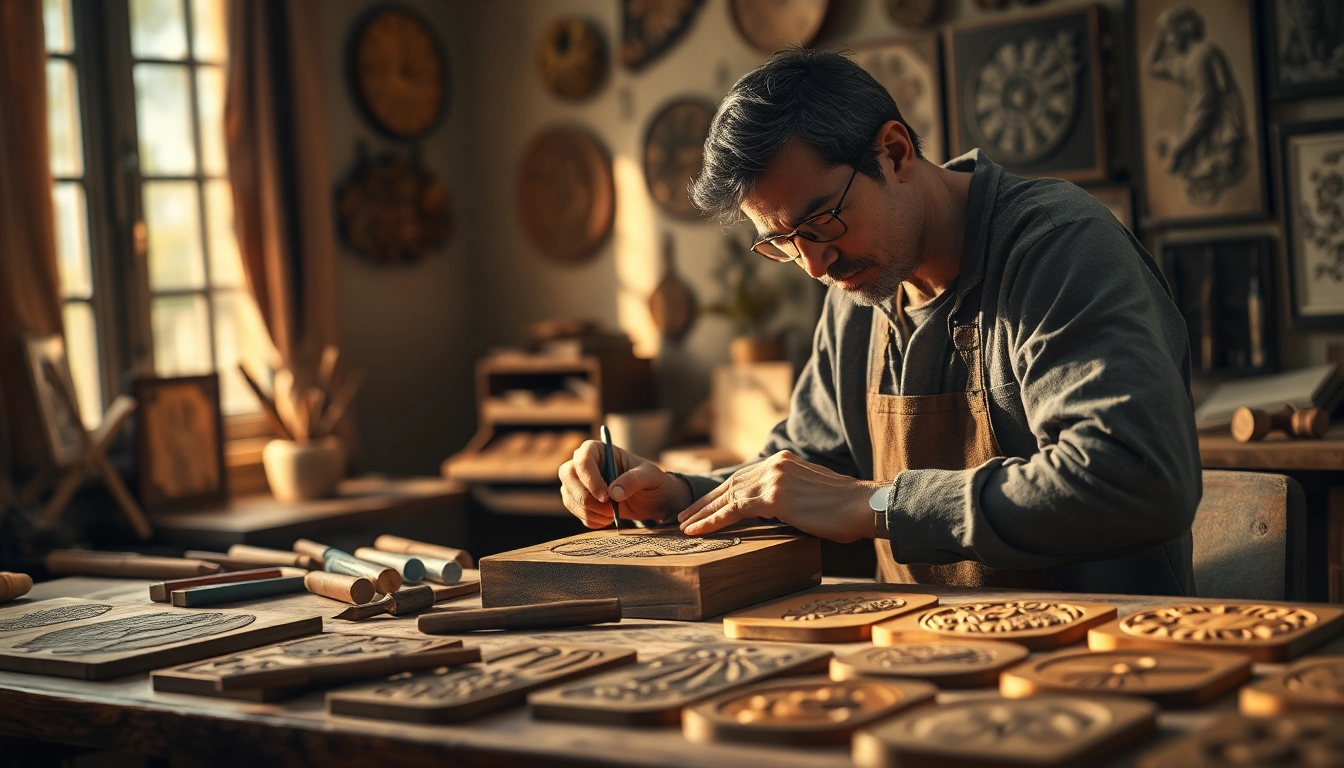Understanding Engravings: History and Technique
What are Engravings?
Engravings are a form of art and craftsmanship involving the incising of designs onto a hard surface. This intricate process can utilize various techniques and tools to create detailed artwork or functional designs. From prints on metal plates to illustrations on wood, engravings serve multiple purposes, from artistic expression to practical applications. Whether etched on jewelry, incorporated into architectural details, or featured in fine art collections, engravings connect history with contemporary artistry.
Historical Significance of Engravings
The practice of engraving dates back to ancient civilizations, where early artisans used rudimentary tools to carve designs into metal, wood, and stone. Each culture left its mark and contributed to the evolution of engraving techniques. For instance, the Japanese have developed unique woodblock printing styles, while European artists of the Renaissance period perfected intaglio techniques, paving the way for modern engravings. The historical significance of engravings is not just artistic but also cultural; they helped disseminate knowledge and art, leading to significant movements like the Reformation and the Enlightenment.
Common Techniques Used in Engravings
Engraving encompasses a variety of techniques, each with unique characteristics and applications. Traditional methods include line engraving, etching, and stippling, which involve the use of a burin, acid, or other tools to create images. In contrast, modern approaches like laser engraving employ technology to achieve precise results. Each method holds its aesthetic appeal and suitability for specific projects, allowing artists to select the best technique based on their vision and intent.
Types of Engravings: A Comprehensive Overview
Line Engravings: Crafting Sharp Images
Line engraving is one of the oldest techniques, characterized by its ability to create sharp, defined lines that can depict intricate details. This method requires the use of a burin to carve lines into a metal plate. The depth and width of the lines can vary, enabling artists to produce rich textures and tonal variations. Famous examples include works by artists like Albrecht Dürer, whose meticulous line engravings showcased his extraordinary skill and attention to detail.
Wood Engravings: Traditional Methods
Wood engravings involve carving a design into the end grain of a block of wood. This technique, often confused with woodblock printing, allows for the creation of fine lines and details. The process is labor-intensive, as artists must carefully plan their design, ensuring that the image is backward on the block. Popular in book illustrations during the 19th century, wood engravings were instrumental in making art accessible to the masses.
Modern Techniques in Laser Engravings
Advancements in technology have given rise to laser engraving, which utilizes a focused beam of light to etch designs onto various materials such as metal, glass, and plastic. This method allows for unparalleled precision and repeatability, making it a preferred choice for commercial applications and personal projects alike. From personalized gifts to intricate industrial designs, laser engravings have opened new possibilities for creativity and functionality.
Tools and Materials for Engravings
Essential Tools Every Engraver Needs
A successful engraver must be equipped with the right tools for their craft. Traditional engravings require a set of specialized instruments, including burins, scalpels, and various inks for different techniques. For those employing modern methods, laser engravers and software for design work are important. Investing in high-quality tools not only enhances the quality of the work but also allows for greater experimentation and complexity in designs.
Choosing the Right Materials for Engravings
The choice of material significantly impacts the outcome of an engraving. Options include traditional substrates such as copper and zinc, which react well to various engraving techniques, as well as modern materials like acrylic and glass. Each material offers distinct characteristics, so understanding their properties is essential. For example, metals like brass are robust and ideal for detailed work, while softer materials like wood may allow for easier manipulation but may limit fine detail.
Maintaining Tools for Optimal Performance
Like any craft, the longevity and efficacy of engraving tools depend on proper maintenance. Regularly sharpening burins ensures clean cuts; thoroughly cleaning tools after use prevents buildup that could affect future projects. Furthermore, understanding the specific requirements for each material can prolong tool life. For instance, using the right lubricants can minimize wear and maintain a sharp edge on engravers, leading to more efficient workflows and higher-quality results.
Creative Applications of Engravings
Personalized Gifts and Keepsakes
Engravings offer a unique way to create personalized gifts that can be cherished for years to come. Items such as jewelry, photo frames, and trophies can be customized with names, dates, or meaningful quotes. This personal touch not only adds value to the gifts but also makes them memorable. Engravings are perfect for commemorating special events, such as weddings or anniversaries, with lasting imprints that carry emotional significance.
Engravings in Fine Art and Prints
In the world of fine art, engravings have been celebrated for their ability to combine artistic expression with technical skill. Artists use engravings to replicate their work on a larger scale, providing access to their art for a broader audience. Significant movements in art history, like the Northern Renaissance, utilized engravings to disseminate visual culture widely. Artists can make limited edition prints, adding value to each piece through the meticulous process of creation.
Practical Uses: From Signage to Decor
Engravings extend beyond artistry into practical applications such as signage and decor. Businesses often use engraved plaques to enhance branding and provide clear directional information. Additionally, custom engravings can elevate interior spaces, adding a personal touch to home decor. From engraved awards recognizing individual achievements to decorative items that enhance aesthetics, the versatility of engravings is almost limitless.
Best Practices and Tips for Successful Engravings
Common Challenges in Engraving
Engraving can present various challenges, ranging from technical issues with the tools to artistic dilemmas like achieving the desired detail and precision. A common hurdle for beginners is mastering the pressure applied while using a burin, which can impact the lines’ depth and definition. Additionally, selecting the right material is crucial; for example, softer materials may be easier to work with but could compromise intricate designs.
Safety Tips for Engraving Artisans
Safety should always be a priority in engraving practices. Wearing protective eyewear and gloves can prevent injuries from sharp tools and flying debris when working with harder materials. Ensuring a clean workspace and handling tools with care can minimize accidents. Given the diverse techniques employed in engraving, understanding the specific safety measures for each is vital for an engraver’s health and well-being.
Improving Skills Through Practice and Learning
Like any art form, engraving skills improve with practice and education. Aspiring engravers should seek workshops, online courses, and mentorship opportunities to enhance their technique and knowledge. Studying the works of master engravers and experimenting with different styles can also provide valuable insights. Developing a regular practice routine dedicated to refining specific skills can further propel an engraver’s artistry to new heights.



